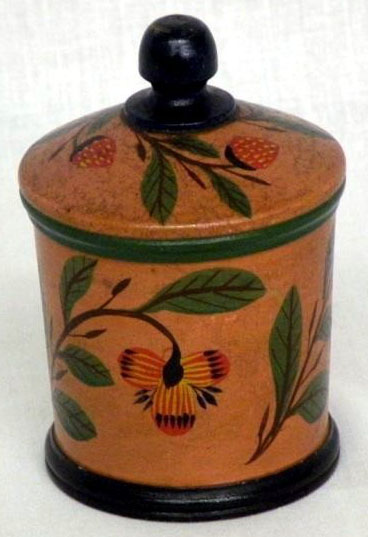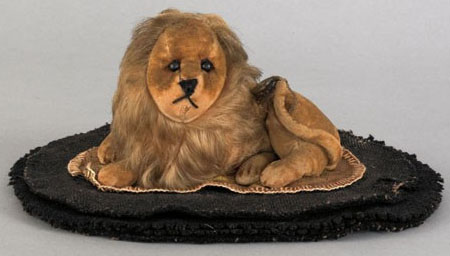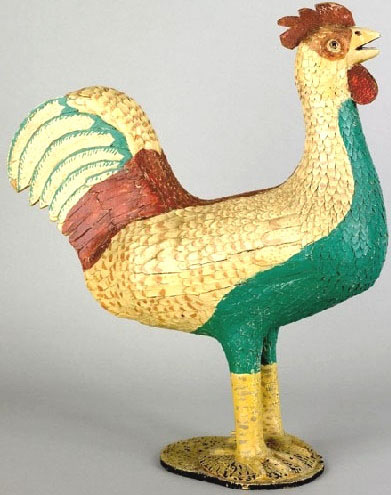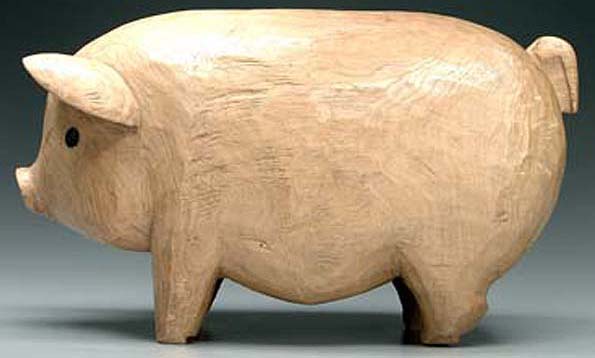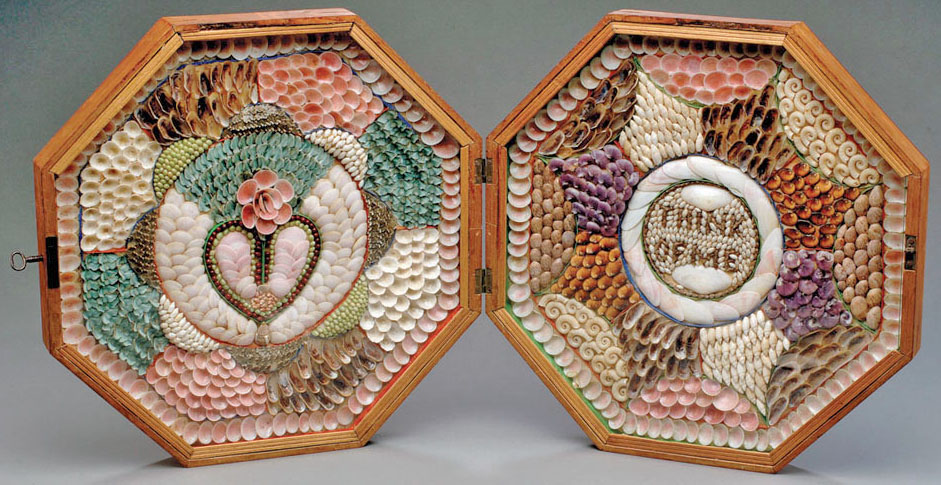
Sailor's 'Think of Me' double shell work valentine
No doubt about it, sailors were the rambling men of the 18th and 19th centuries. Sweethearts back home might not hear from them for months or years at a time, but to make up for it, many sailors brought presents home from exotic ports when they finally returned. Among the most common trinkets was a object called a sailor’s valentine: a box, usually octagonal, usually double-sided and hinged, that contained an artful arrangement of shells, just like the one pictured here.
The name is a bit of a misnomer, however, as we now know that it was unlikely that sailors could have accomplished such delicate work while being tossed about on the sea. Sailor’s valentines were actually a cottage industry in the Caribbean, particularly on Barbados. Some even bear the phrase “Present from Barbados” in the design of the shells. The boxes, normally of mahogany or Spanish cedar, often had slogans like “Forget Me Not” or “Home Again,” while others had simple geometric designs. Some had space reserved for inserting photographs. Occasionally, single-sided ones appear, although some have been separated in the modern era for sale purposes. Regardless of their apocryphal origins, the delicate, sentimental nature of a sailor’s valentine would appeal to any sweetheart!
-Hollie Davis, Senior Editor, p4A.com
To search the Prices4Antiques antiques reference database for valuation information on hundreds of thousands of antiques and fine art visit our homepage www.prices4antiques.com.

